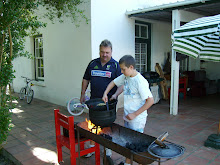A team needs to know where it is going, and why it is meaningful to get there.
A lot has been made of vision, purpose, mission etc.. but for me it doesn’t exactly fit what we now know about teams. Most sports teams will create goals for the season, ‘where they want to go’ – however very few will be able to say why they want to achieve that goal, and even fewer will have a meaningful reason attached to the goal. The why is critical as it raises the importance or specialness of the goal and that energy can be used to up the intensity and commitment in and out of game time.
To maximise the performance of any team, you need to understand team dynamics and how team dynamics can support or hinder performance.
Because every high performance team is unique, for me there is no generic unifying model of what to do, how to do it or any sorts of measurements that can be consistently applied. This area has been fascinating to me, and so currently we are looking to see if we can create exactly that - a high performance team model…. watch this space. (If there is already such a model, I would love to hear about it – please let me know) However if you get a handle on the things that affect team dynamics, it will help with your awareness of what is going on.
People – add one extra person to your squad or management team, or take one away and the dynamics shift and change – not always for the better. Some people in high performance sport believe that the one secret to success is having as many of your (fit) top players on the field together as possible, playing for as much time as possible. This makes sense, but the concept is often abused with star players playing through serious injury and underperforming or worsening their injury.
Leadership – a critical piece, a change of leadership or even the empowering of leaders within your side can dramatically improve team dynamics.
The work that is done – dynamics change from pre-season to in-season, to knock out stages, to tournaments. Understanding that means that as a coach or player your approach needs to be flexible.
The amount of team the team has been together – as team’s mature, things change. Trust and comfort is often a result of a team staying together, provided that strong leadership ensure there were no rifts or divisions in the team. What works for a team in its first year, may not necessarily work as well again. Teams need to be aware of what makes them successful, whilst at the same time re-examining their processes when appropriate.
The system the team is in (and the systems they create) – The people around the team, the other teams that are related to the team, the administration or club management, or even school administration all has an affect on a team. There are other systems: supporters, press, family, friends and loved ones, and so the list goes on. Sometimes the affect from a system is subtle, sometimes it is significant. Most of the time this affect is almost ‘accidental’ in that it wasn’t planned, so the chances of this affect being positive is a lot slimmer than if it was a purposeful affect.
For example a 1st team at school makes a point of visiting a junior teams locker room to tell them that they believe in them and support them fully vs the 1st team rugby players arriving late in the day, with plenty of time before their match, but missing a lot of their junior sides playing.
To your high performance team!
Subscribe to:
Post Comments (Atom)

No comments:
Post a Comment